keep out
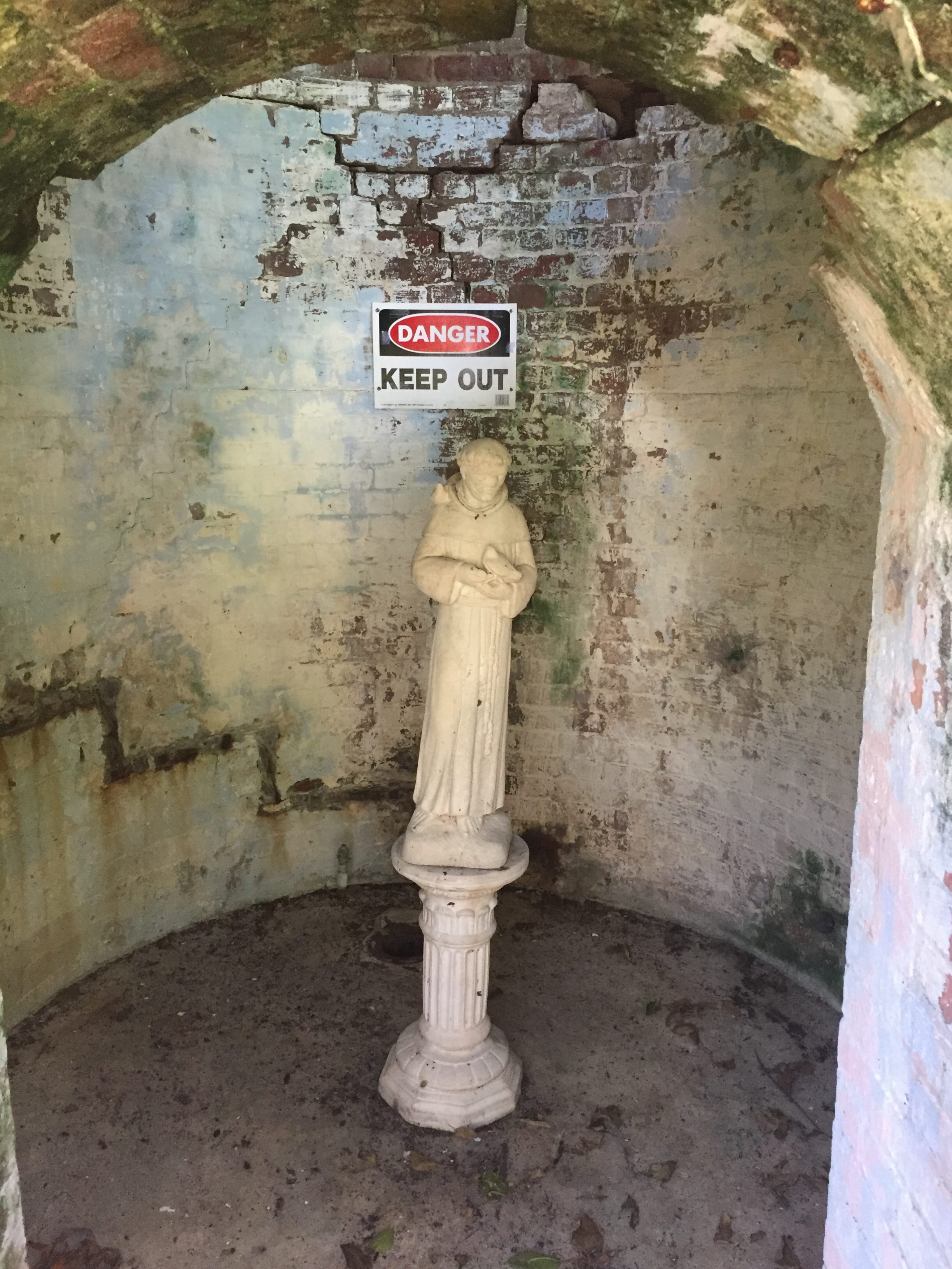
The traveler explores the American Wayside, verifying the contents of a mysterious guide written by a man with whom he shares a likeness and name. Excerpts from ‘Autumn by the Wayside: A Guide to America’s Shitholes’ are italicized. Traveler commentary is written in plain text.

‘‘The Maze of Secret Rooms’ is just one room, really, but it is connected to all other secret rooms in a pattern that could be interpreted as maze-like. A bonafide supernatural marvel, ‘The Maze of Secret Rooms’ remains relatively unknown for two reasons:
1. It is necessarily secret.
2. It is icky.
The archetypal secret room sits on the backburner of the American sub-conscious like a half-remembered nightmare, occasionally reminding us that any mirror on the inside wall of our motel room may be moonlighting as a window. Theoretically, every built-in bookcase or shallow closet holds the potential for an unvetted passage between the walls, every portrait a googly-eyed peephole for imagined ne’er-do-wells. The occasional news report of a cramped pervert and his unconventional use of a ventilation duct fuels the backburner: the exceptional making monsters of the mundane.
‘The Maze of Secret Rooms’ may well be a manifestation of the same archetype, it being a grim, dusty place that sits behind every existing secret room and makes a small effort at ironic justice. Most visitors stumble upon the room accidentally and most assume it is vestigial space of their own home, sealed away for the renter’s benefit (and most are happy to seal it again). Those who dig deeper find a strange jigsaw of trapdoors, crawlspaces, and gaps between floorboards that look into unfamiliar, faraway spaces. ‘The Maze of Secret Rooms’ presents an uncomfortable lens through which to view the lives of Americans, one that allows its discoverers to become the very person they always assumed might be watching.’
A man sits on his heels, his left eye pressed to the inside of a wall. His breath emerges in deep, billowing clouds.
A group of people in a cramped space speak in angry whispers.
A child lays flat in a narrow crawlspace, its eyes following footsteps above.
Through a keyhole I see an army of statues, men and women standing with rigid backs. It’s dark in the room, but I see myself in stone, clear as day. At Alice’s tapped suggestion, I slip one of her picks through the aperture and leave ‘The Maze of Secret Rooms’ and then the secret room inside ‘The House of Wallpaper and Carpet,’ now exposed. The sun has set and I take my chances sleeping on the plush floor of an empty bedroom. By morning time, ‘The Maze of Secret Rooms’ has vanished.
Alice swings about the speedometer, sure of the path to reunion.
-traveler
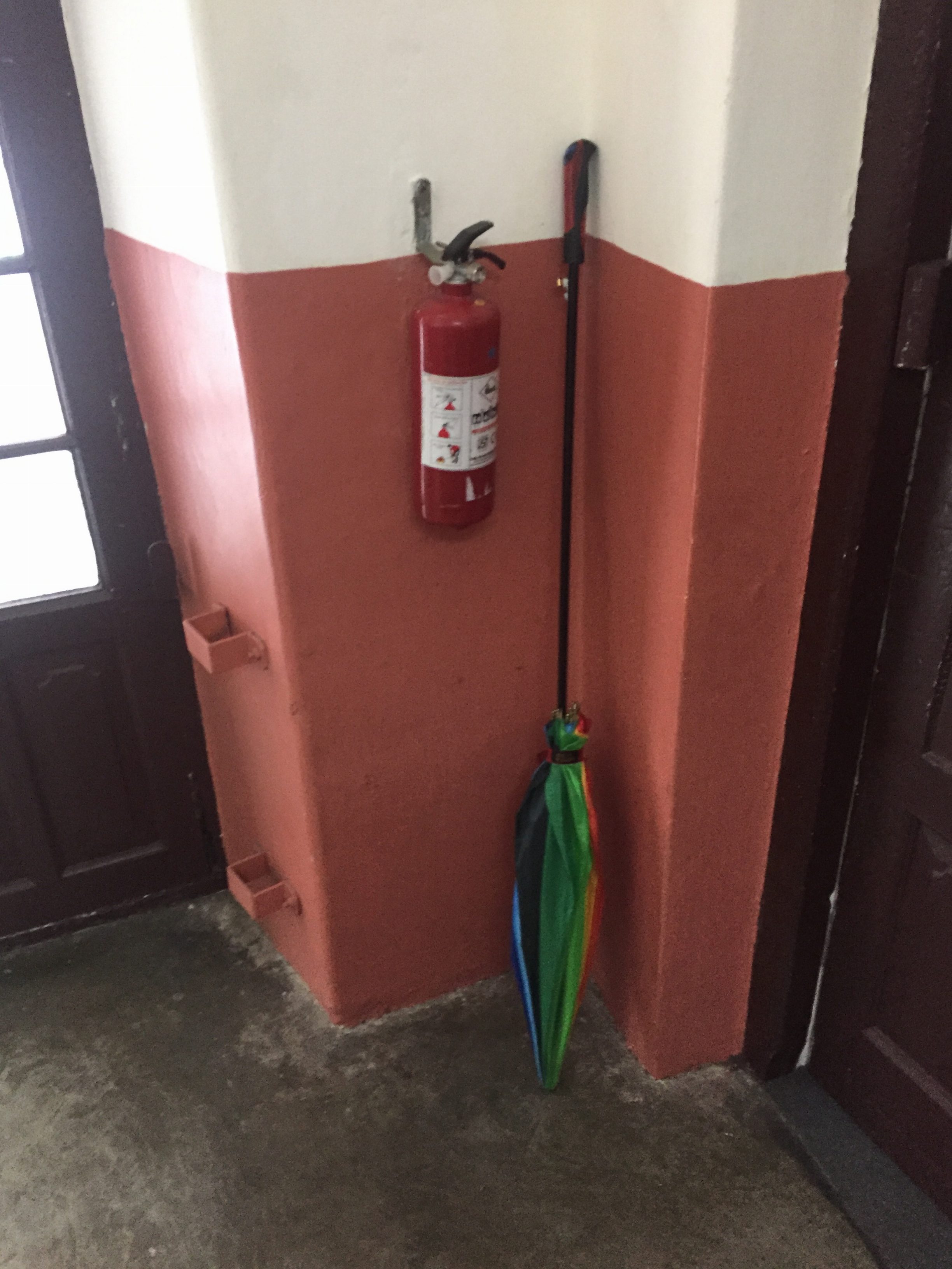
‘‘The House of Wallpaper and Carpet’ is probably best described as a private museum, though the eccentricities of its content and means of interaction stretch the criteria of any traditional enterprise. The outside of ‘The House’ displays the rictus idealism of mid-fifties suburban construction- a style that has been tired since the dawn of the new millennium but has determined to push through anyway (a style that has conceded so many carcinogenic organs that it is new in the fashion of Theseus but old in every other conceivable way).
Payment for entry is made off-site at the front door of a home that is considerably less tired. The woman who lives there vehemently denies ownership of ‘The House of Wallpaper and Carpet” but is set up to swipe credit cards and print receipts with a code that unlocks the front door. Entering ‘The House,’ one feels compelled to call into the darkness or risk being confused for a burglar. There is an implication of wrongdoing that deepens with every moment of the brief self-tour.
The impressive layering of carpet in the house (preserved in its original state, they say) has been cut through to the wooden floor in a path that takes one through each room and out into the backyard, though the pamphlet makes it clear that no area in particular is off-limits to the curious. The path also allows for an examination of ‘The House’s’ fabric strata in the style of an archeological core sample- a visual romp through the decades that codes itself by color and thickness (pay particular attention to the hedonism of the seventies, its outrageous shag sandwiched between the threads of more conservative eras, thin and pale with embarrassment).
Though the carpet is nearly three feet deep in places (scrunched together like great dunes), the thick walls are ultimately the cause of many tourists’ reported claustrophobia. Wallpaper hangs from them like a gaudy fungus, shifting with the whisper-rattle of dry skin. Lovers who write their names between the pages break out in a rash that persists for weeks (but learn nothing from their mistake).’
Alice guides me to ‘The House of Wallpaper and Carpet’ and I enter, positive that she’s leading me to the resting place of some other forgotten body now fossilized in its domestic folds. I take a few cautious sniffs and, sensing nothing more offensive than powdered carpet cleaner, let the door close behind me. The miniature labyrinth of the entryway bears no semblance to a human habitation. The leafy curls of torn wallpaper and plush carpets evoke the jungle in miniature and I am careful to keep my feet within the bounds of the path. It winds into the living room and through to the kitchen where I take a chance on several steps of layered linoleum, leaning in close to a spot where visitors have torn away hundreds of layers of wallpaper, finding no wall underneath. I sit in the rusted footprint of an old fridge (the linoleum there sagging and melted) and wonder what wisdom a place like this has to offer.
There, I notice a new curl forming in the center of the mess- the paper underneath a pure, matte black. I tear it away and find there is no paper, only the darkness of a forgotten room. Alice quakes in her vial, giddy with discovery.
-traveler
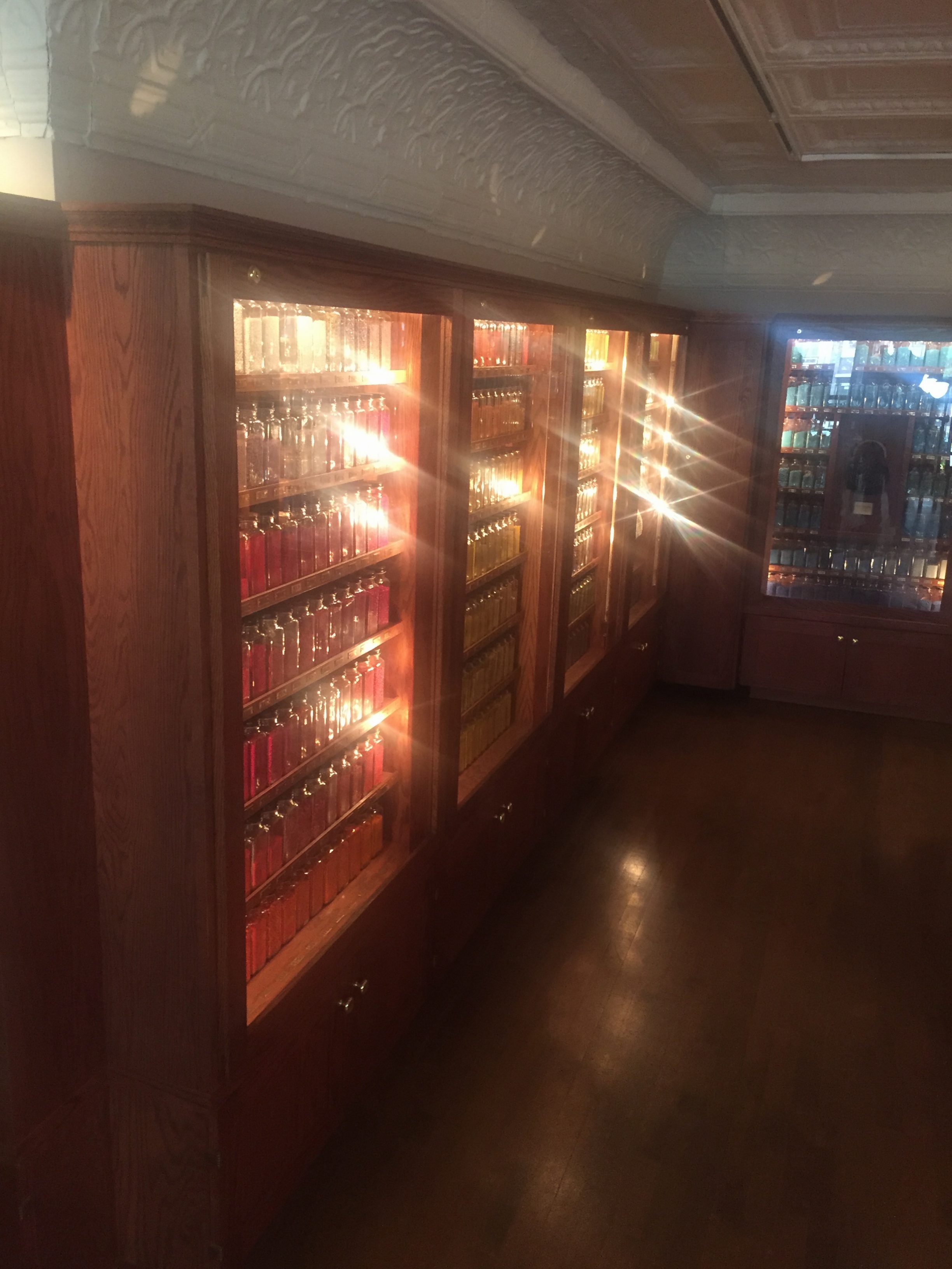
I am no more able to see constellations than the future. This was a revelation to a younger me who, on a weekend’s stay on the lake (the last hurrah of elementary school), realized that pretending to see something was easier than explaining I couldn’t.
I want to believe there are pictures in the sky, reader.
But I can’t see them.
I’ve read the books and I understand what should be there. In a splinter of galaxy set to paper, I can sometimes connect the dots myself. But not in the sky. I can hardly pinpoint the pole star.
Here’s a crazy thought:
Maybe that’s why I’m lost, why the road has been so long and inconclusive. Maybe the path is obvious to everyone but me.
‘Lifted halfway from the horizon, ‘The Public-Use Observatory’ rises menacingly from the highway- the west coast’s own bleak sun. The facility is prematurely aged by its proximity to the ocean, rusting at the creases in its frame and home to various seabirds. There is a gate at the parking entrance, though admission is free. The man that raises the gate looks as much a part of the environment as the booth he resides in.
‘The Public-Use Observatory‘ is open all hours, otherwise unmanned, and is, accordingly, built in the style of a public restroom- fortified in every aspect. The inside of the building is largely made up of cement and cheap, brutalist flourishes. Its walls recount a secret conflict between graffiti artists and a scouring brush, these hieroglyphic scars occasionally interrupted by the charcoal scorches of amateur arsons. The facility remains unfazed by these surface blemishes, it being a monolith and we being ants that occasionally explore its fissures. This is a temple of aluminum mirrors and flushless toilets.
The telescope level of this millennial ziggurat employs pure structural intimidation in the place of normal safety barriers. Massive exposed gears, operated by cranks on the floor, shift the lens about its hemisphere and crush the short-sighted vermin that have nested in the works. These represent ‘The Public-Use Observatory’s’ only confirmed casualties in its many years of operation.
For all its bluntness, nothing like ‘The Public-Use Observatory’ exists elsewhere in the world. Its accuracy and sheer invincibility make it the subject of papers in circles both cosmological and architectural. It is a private property and the little necessary maintenance is arranged by an anonymous patron. The only acknowledgement or dedication to be found is inscribed on the ground near the entryway. It says: ‘THIS IS IT.’’
A confession, reader:
‘I’ve been writing the entries as far back as August.”
Not much difference.
Alice guides me now, Shitholes re-writing itself or falling apart in the bottom of my pack. Her pick in the speedometer takes me to ‘The Public-Use Observatory’ and I follow, feeling freer for putting myself in her command. She, in turn, has become a gracious navigator, no longer pointing generally but signaling turns and off-ramps and reminding me to stop when my eyes are blurring with the length of the road.
There is a moment’s hesitation in the hand of the boothman when we turn into ‘The Observatory’ and I wonder if he reads my constellation blindness and pities me for trying. Absurd, yes. I can see the stars as well as anyone. For all the man knows I could be in the game for any celestial body. The gates raises, eventually, and I park. I stretch my fingers and examine my palms.
On the right, Orion in blue pen.
On the left, the Big Dipper in red.
“Foolproof,” said a friendly woman in a café, “These two are the easiest to see.”
That was months ago and I’ve gone over the little dots each night to preserve them, to memorize them, and, on a superstitious level, to encourage them to seep into my skin. People have recognized the patterns since and that’s only served to bolster me. I, a vampire of self-regard, steal into the night with their encouragements.
‘The Public-Use Observatory’ is a cold, echoing place, largely windowless and seemingly devoid of life. The caged lights in the mezzanine make the various informational signs difficult to read, but I learn from them the necessary crank rotations for aiming at and focusing on the foolproof constellations. Armed with this knowledge (having literally penned the coordinates on my wrists), I climb the stairs to the telescope and fail for an hour to see anything but the familiar pin-prick chaos of our universe.
A dab of hand-sanitizer does away with the scribbles on my palms, making a purple mess of my fingers. I pull a sheet of paper from the ground to wipe my hands- a tattered sign that lost its grip on the door.
‘Out of Order,’ it says, ‘(the stars).’
-traveler
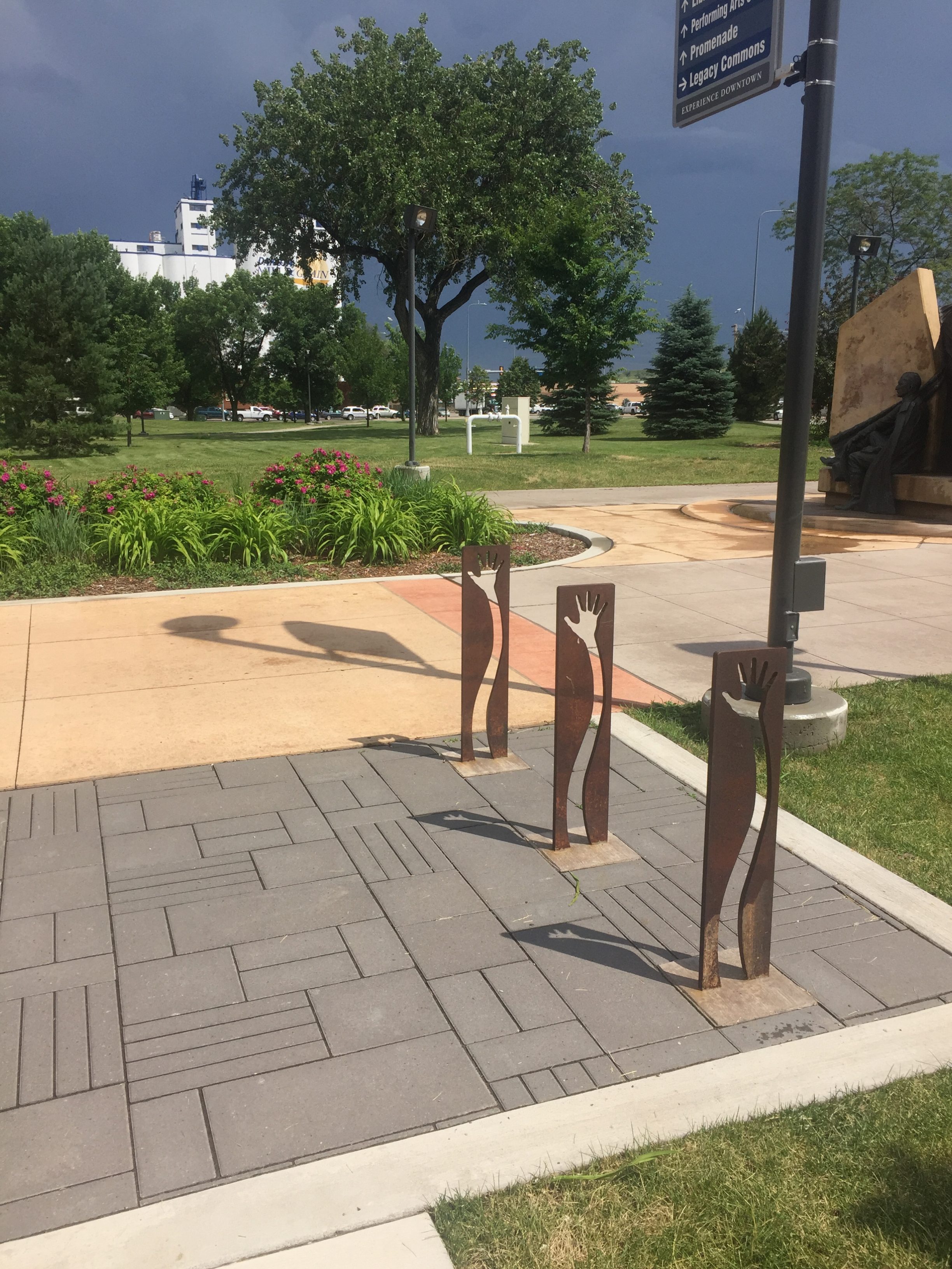
There is a calm in wondering how a ruined thing came to be. I look for that sanctuary in the brickwork of a chimney, the hollowed bulk of an old stone cottage that stands in the forest. The chimney’s mason took care in the arrangement, adding decorative arches where lines would have saved time and bricks. Someone, long dead, was fanciful in their work. It’s difficult for me to reconcile the gruff mason in my head with the person who would choose these patterns- two rusted stereotypes at odds.
The dissonance is enough to send ripples through my meditation and, in trying to reclaim it, I blow dust from the ridges of the old structure. My lungs whistle and I cough, sounding, to the trees, like a cackling witch for all my wheezing.
Looking at my shadow, you might think I was bent over in laughter.
‘The superstitions of street punks, hobos, and Gray Road theorists align on this point: there are places in the world that feel heavier than others and, in their heaviness, exert a sort of force. These points anchor whatever geo-mystical/philosophical network happens to be trending at the time- the waypoints of your non-denominational ley lines.
There is no dearth of research on the subject, though ‘research’ should in most cases be defined with a picture of a map, scattered with tacks and string and blurry pictures of the American countryside. Unfortunately, the enthusiasm of zealots only serves to confuse the research-scape, effectively diluting any truth in the matter. To layer the varied believer networks one over the other until they were all accounted for, well, we would be left with an opacity that mirrors the task.
Underneath the labyrinth of the American highways and the fractal systems of public transit, there are certain locations that surface more often than not- coherencies in the otherwise rabid fever dream. ‘The Cottage Out North’ is one of them, nothing but the ruins of an old house that gasp for air in the underbrush. ‘A magical place,’ say the witches. ‘A place to cook,’ say the homeless. ‘An example of lasting architecture,’ say the preppers (the soothsayers of our time, for the world will end, eventually).
‘The Cottage Out North’ appears on so many iterations of the mystical map that it’s difficult to disregard its significance in the Wayside. Hardly comfortable, it is, by all accounts, a benign place- a stone in the river that will take your weight in crossing.’
My breath returns to me and I gather my scattered belongings. The bike, framed in the doorway, clicks and groans in the warming air. Crossing the threshold toward it, I wonder if summer may be around the corner.
-traveler
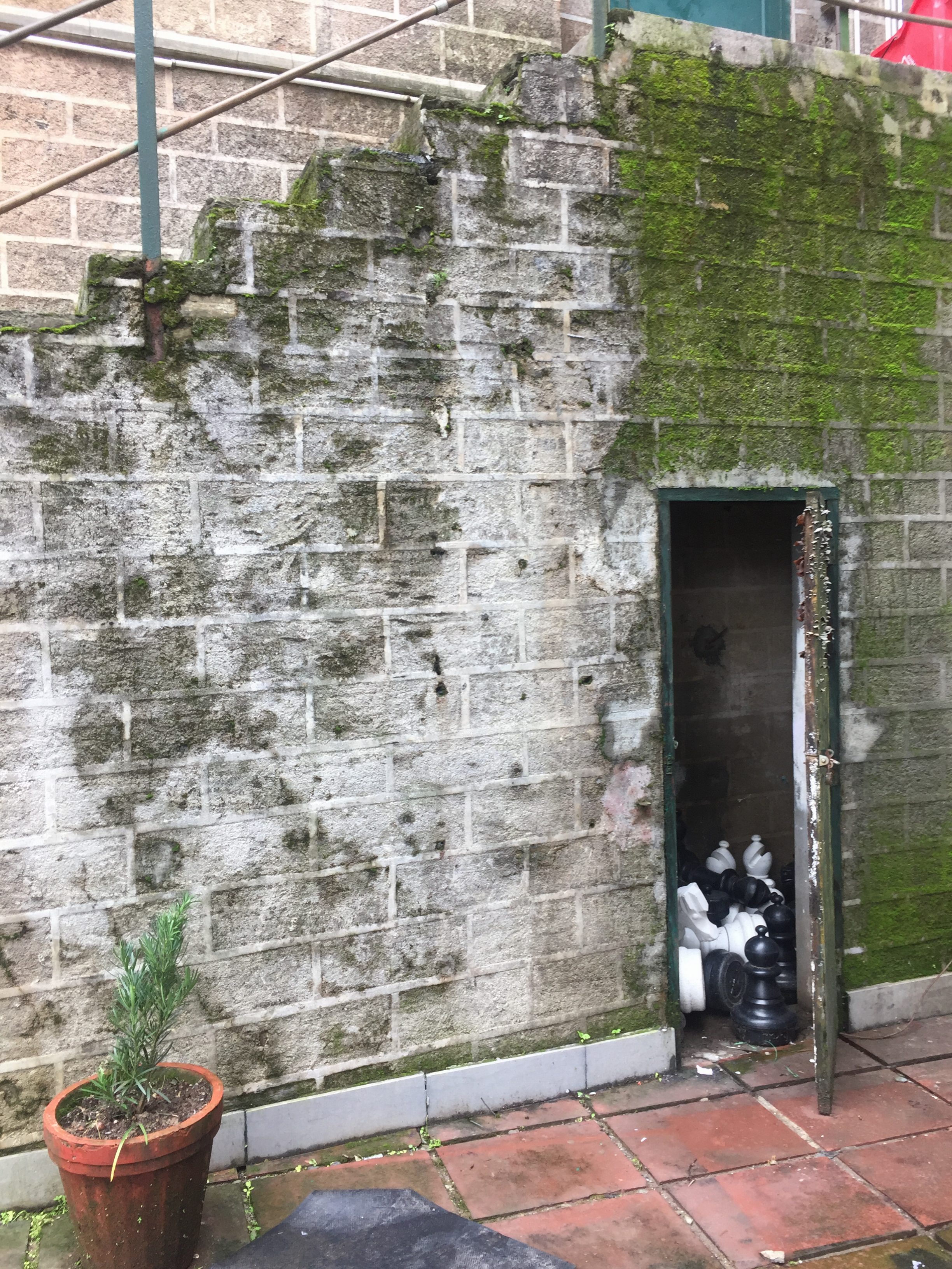
The town of Redmond Bay was evacuated in 2013 when a fine cloud of feathers formed on the corner of Main and 3rd, growing exponentially until it encompassed the better part of a the downtown area. This cloud has not since dissipated, though online sources suggest that an hour’s rain drives the cloud into the ground and grants a short reprieve from the noxious air.
It’s convenient, then, that I pass Redmond Bay as the Pacific Northwest’s early autumn heaves itself from the gray ocean, spitting and slobbering like a mad old man. Convenient to find the streets of this ghost town dark and gleaming.
I wear a mask, one of those thin, papery half-orbs you can pick up in any pharmacy having, vacillated between this and something several times the price (and undoubtedly more effective). The tissue barrier grows absurd in the shadow of a quarantine sign that has resisted the years of mossy encroachment. Its letters cut through the afternoon darkness, reflecting red in the headlight of the bike.
“WARNING: DISASTER AREA. AIR IS UNSAFE FOR BREATHING”
‘It would be three years before the displaced townsfolk of Redmond Bay would learn that the ‘1st Annual Pillow War’ was instigated by ‘Sleep-Time Tech’ for the sake of marketing- a secret sifted from the bankrupted ruins of the same company. Their flagship product, a pillow made of blended down, was a tough sell in this, the hypoallergenic age. How to get people to recognize the airy softness of their pillow filling?
Why not a pillow fight?
The iconic ‘Bilderberg Photo’ is associated with the beginning of ‘The Redmond Suffocation.’ Two men are frozen, center-frame, their pillows bursting at the base of a bronze statue- Edmond Bilderberg, who founded the town. A woman has fallen in the background, one hand on her chest. Behind her, an unidentified body already lies prone on the bricks of Redmond’s central square.
The occasional resurfacing of the ‘Bilderberg Photo’ draws tourists to the outer-limits of the quarantine zone. More than one morbid pilgrim has been pulled, alive, from the dark city in the years since its abandonment. Countless missing are presumed to have entered and remain unfound.’
A storm passed over Redmond Bay just before I arrived, tearing at my gas-station parka on the ride up and dwindling to a drizzle as I approached the quarantine. It’s a gamble, already, to take the advice of the internet in matters of breathing so, while many speculate that a light rain is enough to keep the feathers out of the air, I set a timer for half an hour and promise myself I won’t walk more than 15 minutes away from the line of safety.
When I was a child, maybe eleven or twelve, I spent the night in the library- part of some initiative to keep kids reading. It was your typical pizza and junk food shit-show with most of the kids being assholes or getting homesick, but when things wound down and the lights went off and we were all supposed to find our own nook of the library to curl up in, well, that was something special. To see that place in darkness and to find peace there- it’s a memory I hold like a security blanket decades later.
Redmond Bay is like that. Though the tones are admittedly grimmer, I find the same peace in its corners, the same darkness behind the glass store fronts. I let myself into a grocery store where much of the stock remains and consider the harm in taking a few cans of food for the road. My meddling stirs the dust from the shelves, a dust that has settled on every surface. I cough twice, comparing the nutritional benefits of two chicken-noodles, before a pin-prick pain in my chest alerts me to danger.
Outside of my reverie, the dust has collected into a thin, white fog, the torn feathers having crept into the store in the five years of abandonment. I try to hold my breath but the prickling in my lungs forces another cough through the mask, a wet, red cough.
Things blur as I try to run. My legs buckle as I round the old bakery and I see the body of a man in the checkout aisle, a candy bar gripped in his desiccated fingers.
‘He played this game before me and he lost,’ I think.
‘I’ll show him,’ I think.
And the world goes black.
–//–
Rain wakes me, my body saturated and cold. My lungs play a sickly harmonica. Each breath is a battle and the sky above me is gray.
Consciousness returns in waves, building to a coherent high tide. My shirt is pulled up over my chest and gravel scrapes at the bare skin of my back. As I try to make sense of my surroundings I realize I’m still holding the can of soup. I let it roll away and the noise of the metal on the pavement brings my inching travel to a halt.
After a few quiet seconds, as I fail to find the energy to do anything but breathe, the friendly tug pulls me another inch toward the edge of town. In the long hours of wheezing and dragging I catch glimpses of my shadow, splayed weakly in the growing dark. It has been playacting all these months but now it wants to live.
And it needs me.
-traveler
© 2024 · Dylan Bach // Sun Logo - Jessica Hayworth